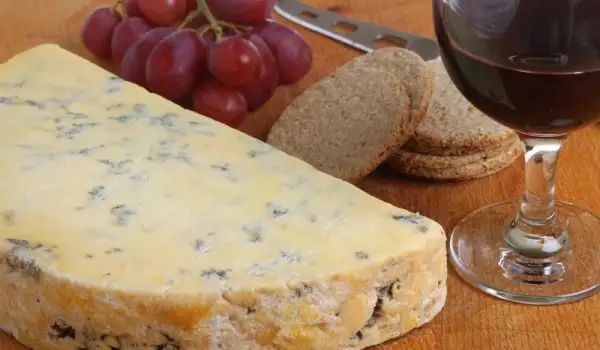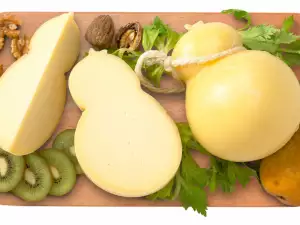Stilton is a cheese of English origin. It is the most famous British blue cheese, plus it is the only one in England that has its own certified trademark.
Stilton is available in 2 versions - blue cheese (the more famous one) and white cheese, which is not particularly popular and is rarely seen beyond the borders of Great Britain.
An interesting fact: it takes about 20.5 gal (78 L) of cow's milk to produce one 17.5 lb (8 kg) cheese wheel. The consistency of the cheese is semi-soft and crumbly, while aging time is 9 weeks minimum. The older the cheese, the softer and smellier it is.
According to one of the latest studies, this notable English cheese faces the threat of disappearing in the next few decades. The reason for this is the decreased demand. It is claimed that the reason for the lowered interest toward blue cheese is the mold.
History of Stilton

Stilton cheese carries the name of the namesake town of Stilton, located 80 miles from London. Interestingly enough, it has never actually been made there. During the 18th century, a trade route between London and York passed through it, with Stilton being a very important stop along the way.
The proprietor of an inn in the town, Cooper Thornhill, first began offering his guests a cheese that he bought from a farmer. The cheese quickly gained popularity and earned the name of the town.
Later, Stilton began spreading outside of England by traveling merchants. And today, 300 years later, the cheese is produced exclusively in the counties of Derbyshire, Leicestershire and Nottinghamshire. Only 7 dairies, which use the original recipe passed down for centuries, are licensed to produce Stilton cheese. Some call it the "king of cheeses".
Choosing and Storing Stilton
Curiously, in 2011 they began the production of a Christmas cheese with gold injected into it.
This luxury delicacy is made from first-rate Stilton blue cheese, which contains gold liqueur and edible gold.
The price for 2 lb (1 kg) reaches a staggering 608 British pounds. At this price, the cheese turns into the most expensive one in the world.

Producers hope to draw interest to the regular version, which as mentioned, has seen a significant drop in demand.
Cooking Stilton
Stilton is distinguished by its exceptionally strong aroma and yellow-orange color. The cheese is streaked with blue-green veins. Its rind is incredibly hard and not fit for consumption.
Stilton is primarily served with crackers or biscuits, while the English traditionally pair it with celery sticks or pears. In the culinary world, Stilton most frequently finds use as part of salad dressings or cream soups. It can be added to meat and vegetable dishes, various types of desserts.
Due to its strong aromatic-taste qualities, Stilton perfectly complements well developed and complex dessert and port wines.
Try out this superb recipe for broccoli with Stilton.
Ingredients: 1/2 cup crumbled Stilton cheese, 17.5 oz broccoli, 1/3 cup cream, 2 tbsp flour, 2 tbsp butter, 1 garlic clove, black pepper and salt to taste.
Preparation: Rip the broccoli into florets and boil them in hot water until they soften. Heat 1 tbsp butter in a pot and add the finely chopped garlic. Saute on low heat.
Subsequently, add the remaining butter, the flour and stir. Add the blue cheese, cream, broccoli. Stir and leave the dish to boil until the cheese melts. Once the dish thickens, season it.
If you have still not tried the king of English cheeses and are fans of heavier cheeses, Stilton is the perfect one for you.













